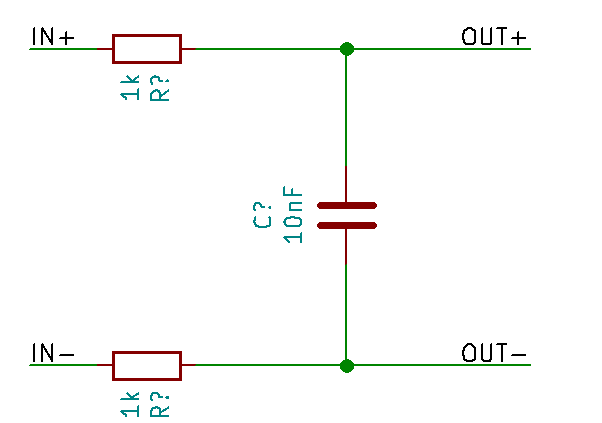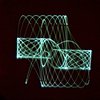How does it work?
A low-pass filter is a device that allows frequencies to pass below a certain threshold called the cutoff frequency. Below is a circuit of the simplest low-pass filter, made of a capacitor and a resistor. Intuitively, you can say it works as a low pass filter because the capacitor takes time to charge through the resistor, so any quick changes on the input are absorbed by the time delay and aren't seen on the output. The lower the resistor value, the quicker the input voltage will charge the capacitor, meaning more higher frequencies will get through. The higher the resistor value, the longer the capacitor takes to charge to the input voltage, so higher frequencies are attenuated. Additional stages can be added to increase how much attenuation there is above the cutoff frequency. This is called the filter's rolloff. Note that this doesn't change the cutoff frequency, assuming all components are the same value.

Another thing to consider is the circuit below. This has identical properties to the above circuit, but it is no longer referenced to ground. The two inputs are identical but the negative input is phase inverted. This means the overall or common voltage is free to move up and down as it pleases, but the information we want is present in the difference of the inputs and outputs. This is known as a balanced topology. The diagram above is an unbalanced topology.

So, after all that, how does the vacuum tube filter work? The key is making a circuit of some kind that can change the resistance present in the circuit dynamically and dependant on a control voltage.
Below is the diagram of a single filter stage. It works in the same way as the above balanced circuit. That is there are two inputs (the grids of the triodes), two resistances and two balanced outputs (taken from across the capacitor). The resistance is replaced with the four tube sections. A 6BL8 contains both a triode and a pentode, so there are two tubes in total per stage.
The top triodes are configured as cathode followers. This is pretty much the same as an emitter follower for transistors. The cathode is held at approximately the same voltage as the grid and there is no voltage amplification. The pentodes below are voltage controlled current sinks. The higher the input voltage on the control grid, the more current will flow. Pentodes tend to make better current sinks than triodes, which is why I'm using them.

So, this is where Ohm's Law comes into play. If we want to calculate resistance, we divide the voltage present by the current flowing through the circuit. We have a stable voltage, determined by the cathode followers, and we have a voltage controlled current sink thanks to the pentodes. This gives an effective resistance in the circuit.
Because we're dividing by current, more current means less resistance (current is on the denominator of the equation). We know the lower the resistance, the higher the cutoff frequency is. Therefore, the more current flowing, the higher the cutoff frequency.
Why can't I just use one triode/pentode pair and ground the other side of the capacitor, like in the unbalanced filter above? The reason why the circuit has to be balanced is the voltage on the cathode swings all over the place depending on how much current the pentode draws. The voltage swing is common to both sides of the circuit, but the signal we want is in the difference between the two halves. It's the same as the balanced filter above. If the circuit was unbalanced, the control voltage would change the output voltage significantly. This is called control voltage feedthrough.
The other parts of the circuit deal with converting from an unbalanced (single) signal to a balanced one for the filter stages, and converting back again for the output signal. I'll discuss them if it's requested!
A demonstration
24db Moog Ladder Filter
About a year after making this, I found you can make a Moog ladder filter. Here's a schematic:...
Read more » 256byteram
256byteram


Hi ! I was wondering if there is a way to add resonance to the all tube filter ???